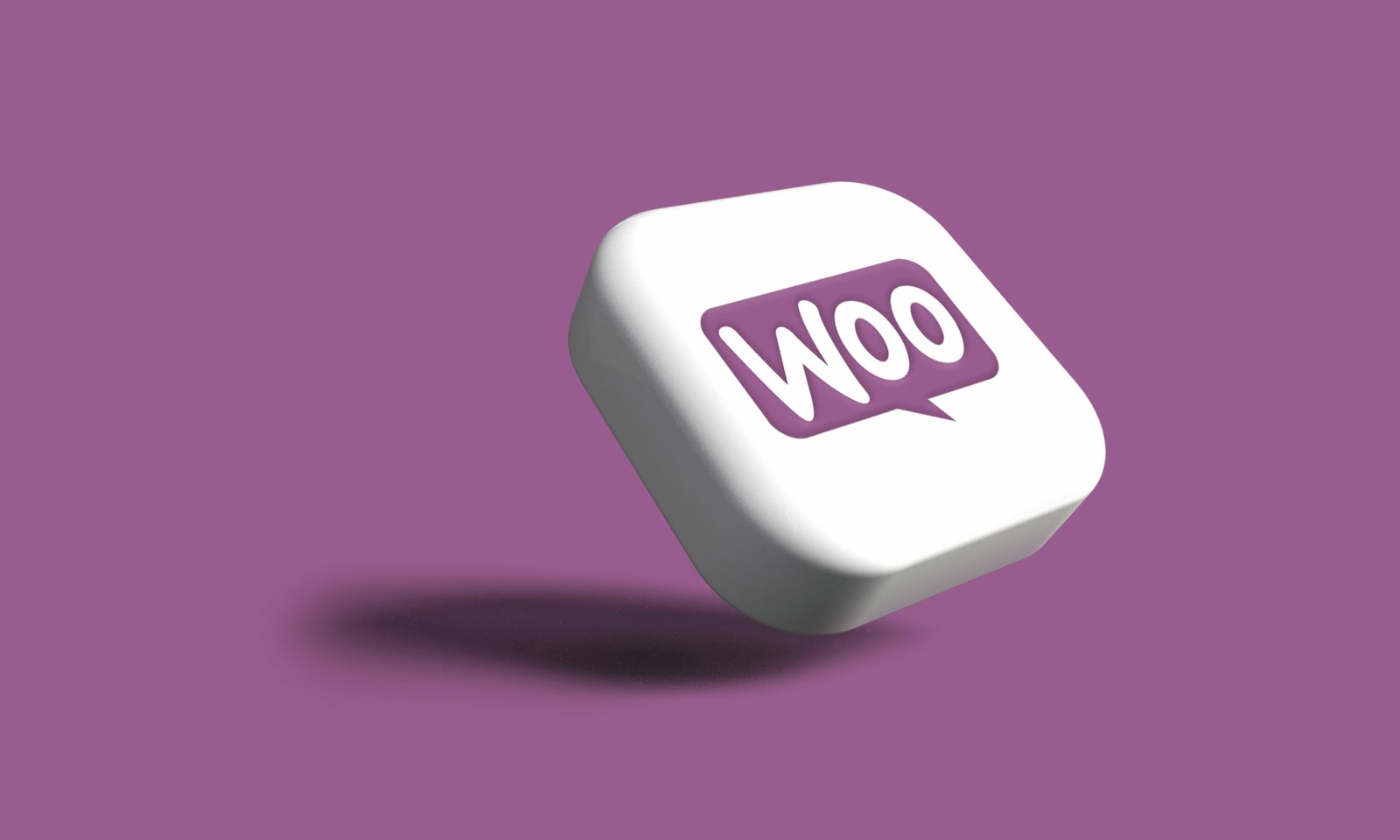Choosing the right ecommerce platform is a critical decision for any online business.
Two of the most popular options, Shopify and WooCommerce, do have a lot in common, but ultimately offer two different experiences. In this comprehensive comparison, we’ll dive into the features, pricing and pros and cons, so you can make an informed decision that works for your business.
Shopify vs WooCommerce: at a glance
Shopify
Shopify is a big-name in ecommerce, and for good reason. It’s a specialist ecommerce platform, designed to make the process of building an online store as simple as possible. It’s an all-in-one solution allowing merchants to start, run and grow an online business, all from one user-friendly dashboard. Shopify’s POS system also makes running an omni-channel commerce business a lot simpler by streamlining online and in-store processes.
Key stats:
Active stores: 4.5 million (BuiltWith)
Average conversion rate: 1.4% (Shopify)
Notable users: Gymshark, Kylie Cosmetics & Heinz
Key features:
- Dedicated app store
- User-friendly interface
- Fully hosted
- 24/7 customer support
WooCommerce
WooCommerce is the WordPress answer to ecommerce. It’s an open-source ecommerce plugin that allows its users to turn their WordPress websites into online stores. It’s been around for over a decade and has become popular due to how simple it is to install and how much it can be customised.
Key stats:
Active stores: 4.6 million (Glorify)
Average conversion rate: 0.3% (Varos)
Notable users: TGI Fridays, Squishmallows & Nutribullet
Key features:
- Access to WordPress plugins
- Complete ownership of data and store
- Wide range of themes
- Immense flexibility
Now let’s delve into all of the pros and cons. We’ve examined both Shopify and WooCommerce across four key elements: cost, design, scalability and apps.
Development & design
Shopify: the pros
User-friendly interface: Shopify is renowned for its user-friendly interface. It’s designed to be intuitive, allowing users with little to no technical expertise to set up and customise their online stores easily. This can be advantageous for merchants who prioritise simplicity in design and want a quick and hassle-free website setup.
Professionally designed themes: Shopify offers a wide range of themes, many of which are created by experienced designers. These themes are visually appealing and cover various industries, making it easy for users to find a storefront that aligns with their brand and style preferences.
Easy customisation: Shopify’s theme customisation options are user-friendly. The platform provides a visual editor that allows users to make changes to their themes without delving into code. This ease of customisation is particularly appealing for those who want a visually attractive website without dealing with complex coding. It also makes the build process a lot quicker than that of WooCommerce, making it a great option if your timeline is tight.
Consistency: Shopify is a hosted solution, so there’s naturally a level of consistency in the performance and design of its themes. Users can rely on the platform to handle technical aspects, ensuring that the design elements work seamlessly.
Unified design: while other ecommerce platforms allow you to sell on multiple platforms, none make it as easy as Shopify does to have a unified design across all of them. Shopify allows you to manage all channels from one dashboard, keeping your brand aesthetic consistent no matter where your customers find you.
Liquid template language: for those with coding experience or access to a developer, Shopify has its own template language called Liquid. This gives users the option to create more bespoke website designs with less limitations.
Shopify: the cons
Cost: Shopify’s premium pre-built themes come at a cost, ranging from $140-$350. This means that the majority of Shopify’s better templates are quite pricey, with only 12 free themes available at present. Some of the customisation options, such as modifying the store’s checkout pages, are only available with Shopify Plus, which is considerably more expensive than other plans.
WooCommerce: the pros
Design flexibility: WooCommerce, being a WordPress plugin, provides unparalleled flexibility, allowing users to create a fully bespoke website that stands out from the competition.
Large library of themes: similar to Shopify, WooCommerce offers a wide range of themes. However, you might need some technical expertise for customisation, and they may not be as polished as those you’ll find on Shopify.
Full creative control: users can customise every aspect of their store using a combination of themes and additional plugins. For those with coding skills, the level of control is virtually limitless.
WooCommerce: the cons
Technical skills required: the appearance of WooCommerce site depends on how many hours you’re willing to put into it, and to achieve the best results, you’ll need a certain amount of technical and coding knowledge.
Less polished: WooCommerce themes lack the sleek and stylish appearance of those you’ll find on Shopify. Plus, if you aren’t an expert in developing ecommerce websites, you may end up with something that looks less than polished.
Our winner: Shopify
Cost & value for money
Shopify: the pros
All-in-one pricing: Shopify’s monthly plans cover hosting, security, and support. It simplifies budgeting as you know what to expect each month.
Free trial: Shopify offers a 14-day free trial, allowing you to explore the platform before committing.
Tiered pricing system: Shopify offers four different pricing plans: Basic, Standard, Advanced and Plus. This means you can keep your costs low in the beginning, and upgrade as your business grows, so your Shopify store grows with you which alleviates some of the worries around cost.
Shopify: the cons
Transaction fees: while Shopify Payments can reduce transaction fees, using external payment gateways may incur additional costs.
Add-on costs: additional apps and features may require separate payments, potentially increasing overall costs.
WooCommerce: the pros
Plugin Flexibility: WooCommerce itself is free, and you have the freedom to choose which plugins and themes to add based on your budget and requirements.
No Transaction Fees: WooCommerce doesn’t charge transaction fees. However, you may still incur fees from your chosen payment gateways.
WooCommerce: the cons
Hosting costs: you need to budget for hosting separately, and costs can vary based on your chosen hosting provider and plan.
Potential development costs: if you require extensive customisation or premium plugins, there might be additional development costs.
Our winner: WooCommerce
Scalability
Shopify: the pros
Built-in scalability: Shopify is designed to scale with your business. Whether you’re a small startup or a large enterprise, Shopify can handle your ecommerce needs as there’s a version of the platform to businesses of every size.
Performance optimisation: Shopify takes care of performance optimisation, ensuring that your store remains fast and responsive. However, it’s worth noting that using complicated themes or installing too many third party apps can slow your site down, but Shopify recently made it easier than ever to keep on top of Core Web Vitals with the introduction of the Web Performance Dashboard.
International selling: Shopify merchants have access to Shopify Markets, which is a cross-border management tool that helps you launch and manage your business across borders from one single store. This makes expanding into new territories easier, and can also increase conversions by offering a localised browsing experience thanks to language translations and currency conversions.
Shopify: the cons
Limited customisation for high-end stores: while Shopify is scalable, the level of customisation might not satisfy the needs of extremely large or complex ecommerce operations. However, Shopify Plus is catered to enterprise level businesses, so this isn’t too much of an issue as long as you have the budget for the premium pricing structure.
WooCommerce: the pros
Unlimited scalability: WooCommerce, being a WordPress plugin, can handle the demands of even the most extensive ecommerce websites.
Performance control: Since you choose your hosting provider, you have direct control over your store’s performance. With the right hosting, you can achieve optimal speed and reliability.
International shipping: while the international selling experience on WooCommerce isn’t on par with Shopify, you do have access to a variety of extensions to facilitate international shipping, some of which allow users to print shipping labels directly from their WordPress dashboard.
WooCommerce: the cons
Dependency on hosting quality: while you have control over your hosting, the performance of your WooCommerce store depends on the quality of your chosen hosting provider.
Our winner: Shopify
Apps & third party plugins
Shopify: the pros
App store variety: Shopify’s App Store offers a wide range of apps and plugins covering various functionalities such as marketing, inventory management, and customer support. This allows users to easily extend the features of their Shopify store without the need for complex code.
Ease of integration: installing and integrating apps in Shopify is typically straightforward. The platform is designed to be user-friendly, and many apps can be added with just a few clicks.
Quality assurance: since all apps go through a review process before being listed on the Shopify App Store, users can expect a certain level of quality and security from the available plugins.
Centralised management: apps can be managed and configured within the Shopify dashboard, providing a centralised location for users to control and monitor their store’s functionalities.
Shopify: the cons
Costs add up: while some apps are free, many come with subscription fees. The costs of using multiple apps can add up, potentially increasing the overall expenses for store owners.
Limited customisation: users might encounter limitations in terms of customisation when relying solely on third-party apps. Customising functionalities beyond what the apps offer may require advanced development skills.
Dependency on app developers: the effectiveness of apps depends on the developers’ commitment to updates and support. If an app developer discontinues support or updates, it could lead to compatibility issues or security vulnerabilities.
WooCommerce: the pros
WordPress ecosystem: WooCommerce benefits from the vast WordPress plugin ecosystem. Users have access to a wide variety of plugins covering SEO, analytics, payment gateways, and more, beyond what is specifically designed for WooCommerce.
Open source and customisation: being open-source, WooCommerce allows for extensive customisation of apps and plugins. Users can modify existing plugins or develop their own, providing unparalleled flexibility.
Cost-effective options: while some premium plugins may have costs associated with them, there are numerous free plugins available. This can be advantageous for budget-conscious store owners who still want to extend the functionality of their store.
WooCommerce: the cons
Quality varies: the wide range of plugins means that the quality and security of plugins can vary. It’s essential to research and choose reputable plugins to avoid potential issues.
Integration complexity: integrating multiple plugins may require more technical expertise, and compatibility issues can arise. Users need to ensure that plugins work well together and are regularly updated.
Responsibility for updates: users are responsible for keeping plugins and the WooCommerce platform itself up to date. Failure to do so may lead to compatibility issues or security vulnerabilities.
Potential for conflicts: with various plugins handling different aspects of the store, conflicts may arise. It’s crucial to test and ensure that plugins work harmoniously together.
Our winner: Shopify
The verdict
When it comes to settling the WooCommerce vs Shopify debate, one thing is for certain: both are powerful platforms.
But all things considered, we do lean towards Shopify due to its combination of usability and sleek design aesthetic. While it may be more expensive than WooCommerce, the investment is worth it due to its capabilities for long term growth, thanks to its tiered pricing system and international selling capabilities.
Shopify ultimately wins because it offers the best of both worlds. The user-friendly dashboard makes life easier for merchants running an ecommerce business day-to-day, while the Liquid template language and ability to add fully bespoke themes appeals to web developers.
Not sure which ecommerce platform is right for you? We can help you decide – send us a message and we’ll be in touch.

